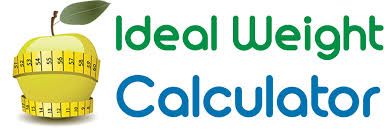lifts is an essential step towards optimizing your workout program and achieving your fitness goals. The Epley Formula and online deadlift one rep max calculator provides easy-to-use methods for estimating your maximum lift, allowing you to tailor your training program and track your progress. By leveraging your one-rep max, you can customize your training, set realistic goals, and perform safe and effective workouts. Master the art of deadlift programming and unlock your full potential with these easy-to-use one rep max calculator deadlift.
Deadlift One Rep Max Calculator
| Repetition | % 1RM | Weight |
|---|
[ez-toc]
What is one rep max for Deadlift ?
The deadlift is a cornerstone of strength training and functional fitness, and knowing your one rep max (1RM) can be an essential tool for measuring progress and setting goals. But what exactly is a one rep max, and how do you determine yours for deadlift exercises? In this article, we will explore the concept of the 1RM, explain how to calculate it, and offer tips for achieving your deadlift potential. Read on to unlock the key to maximizing your deadlift prowess and taking your fitness journey to new heights.
One Rep Max: The Foundation of Strength Measurement
The one rep max (1RM) refers to the maximum amount of weight you can lift for one complete repetition of a given exercise, in this case, the deadlift. Your 1RM serves as a benchmark for your strength, allowing you to track progress, tailor your workout program, and set realistic goals. Determining your 1RM for deadlift exercises can provide valuable insights into your overall fitness and strength capabilities.
Why is knowing your maximum lift useful for Deadlift?
The deadlift is a fundamental exercise in strength training, functional fitness, and athletic performance. Knowing your maximum lift or one rep max (1RM) for deadlifts can play a significant role in tailoring your workout program and tracking your progress. In this article, we will explore the benefits of understanding your maximum deadlift strength, offer tips on how to use this knowledge to your advantage, and explain why determining your 1RM is essential for your fitness journey. Read on to learn how to harness the power of your maximum lift and elevate your deadlift game to new heights.
The Importance of Knowing Your Maximum Lift for Deadlifts
Customized Training Programs: Understanding your maximum lift for deadlifts enables you to create personalized workout programs that cater to your specific strength level. This information helps you determine appropriate weights for various deadlift variations, as well as complementary exercises, to optimize your training and achieve desired results.
Goal Setting and Progress Tracking: Your 1RM for deadlifts serves as a benchmark for your strength, allowing you to set realistic goals and track your progress over time. By monitoring changes in your maximum lift, you can assess the effectiveness of your training program and make necessary adjustments to continue making progress.
Safe and Effective Workouts: Knowing your maximum lift can help you avoid overloading your muscles and reduce the risk of injury. By staying within safe and manageable weight ranges, you can enjoy more effective and sustainable training sessions.
Motivation and Accountability: Tracking your maximum deadlift strength can provide a sense of accomplishment and motivation as you witness improvements over time. This progress can help keep you accountable and committed to your fitness journey.
Improved Performance in Other Exercises: Deadlifts are a compound movement that targets multiple muscle groups, and a strong deadlift often translates to better performance in other exercises. Knowing your maximum lift can help you set appropriate weight targets for related exercises, enhancing your overall strength and fitness.
Check your body strength by above Deadlift One Rep Max Calculator .
How to Use Your Maximum Lift to Optimize Deadlift Performance
Employ Progressive Overload: By gradually increasing the weight, volume, or intensity of your deadlifts, you can continually challenge your muscles, promoting growth and development. Use your maximum lift as a guide to determine appropriate increments for progression.
Periodization: Implement periodization by strategically varying your training intensity, volume, and frequency over time. This approach can help you manage fatigue, reduce the risk of injury, and optimize performance gains.
Utilize Assistance Exercises: Incorporate complementary exercises into your training program to target specific muscle groups involved in the deadlift. Strengthening these muscles can contribute to a stronger deadlift and overall improved performance.
Optimal Warm-up and Recovery: Warming up before your deadlift session and prioritizing recovery afterward can help prevent injury and enhance performance. Include dynamic stretching, foam rolling, and proper nutrition to support muscle growth and recovery.
Knowing your maximum lift for deadlift exercises is an invaluable tool for optimizing your training program, setting realistic goals, and tracking progress. By harnessing the power of your maximum strength, you can tailor your workouts, stay motivated, and unlock your full deadlift potential. Embrace the knowledge of your 1RM and use it to elevate your fitness journey to new heights.
How to calculate one-rep max for Deadlift ? – Epley formula:
The deadlift is a fundamental exercise in strength training, functional fitness, and athletic performance. Knowing your one rep max (1RM) for deadlifts can play a significant role in optimizing your workout program and tracking your progress. One popular method for estimating your 1RM is the Epley Formula. In this article, we will delve into the Epley Formula, explain how to use it to calculate your 1RM for deadlifts, and offer tips on how to leverage this knowledge to enhance your fitness journey. Read on to master the Epley Formula and discover the key to unlocking your deadlift potential.
Understanding the Epley Formula
The Epley Formula is a widely used equation for estimating your one rep max (1RM) for various strength exercises, including deadlifts. The formula is based on the weight you can lift for a certain number of repetitions and offers a simple, effective way to determine your maximum strength without attempting a potentially risky single maximum-effort lift.
The Epley Formula Equation
The Epley Formula estimates your 1RM using the following equation:
1RM = Weight × (1 + 0.0333 × Reps)
In this equation, “Weight” refers to the amount of weight you can lift for a given number of “Reps.” The result provides an estimate of the maximum weight you can lift for one complete repetition of the deadlift exercise.
How to Calculate Your One-Rep Max for Deadlifts Using the Epley Formula
Follow these steps to estimate your deadlift 1RM using the Epley Formula:
- Choose a weight that you can lift comfortably for multiple repetitions (e.g., between 3 and 10 reps).
- Perform a set of deadlifts with that weight, counting the maximum number of reps you can complete with proper form.
- Plug the weight and reps into the Epley Formula equation:
1RM = Weight × (1 + 0.0333 × Reps)
- Calculate the result to estimate your 1RM for deadlifts.
For example, if you can deadlift 200 pounds for five reps, your estimated 1RM would be:
1RM = 200 × (1 + 0.0333 × 5) ≈ 233 pounds
Keep in mind that this formula provides an estimate, and individual results may vary. It’s essential to prioritize safety and listen to your body when attempting heavy lifts.
How to Calculate Deadlift 1RM with a Deadlift One Rep Max Calculator
Using a Deadlift One Rep Max Calculator is a convenient and accurate way to estimate your 1RM. Here’s a step-by-step guide on how to use it:
Select a Calculator: Choose a reliable Deadlift 1RM Calculator. There are numerous online calculators available for free.
Enter Your Details: Typically, the calculator will ask for the weight you lifted and the number of repetitions you performed with that weight.
Calculate: Input the data and click the calculate button. The calculator will provide you with an estimated Deadlift 1RM based on the entered information.
Review Your Result: The calculator will display your estimated 1RM. Take note of this number for your records.
Tips for Accurate Calculation:
- Ensure that you input the weight and repetitions accurately.
- Use data from a recent deadlift session where you performed the lift with proper form.
- Remember that while calculators provide estimates, actual 1RM values can vary due to factors like fatigue and technique.
What are Deadlift Exercises ?
Deadlift exercises have long been hailed as a cornerstone of strength training and functional fitness. Yet, despite their popularity, many people are still unaware of the true potential these powerful moves hold. In this comprehensive guide, we will uncover the mystery behind deadlift exercises, delve into the benefits they offer, and explore the various techniques you can incorporate into your workout routine. Read on to learn more about this essential compound movement that targets multiple muscle groups and can transform your fitness journey.
Top Deadlift Benefits Exercises
Improved Strength and Muscle Development: Deadlifts work several muscles at once, promoting balanced growth and development. They can also help you achieve a toned, strong physique, making them a crucial addition to any workout routine.
Enhanced Functional Fitness: Since deadlifts mimic natural movements like lifting and carrying heavy objects, they improve your functional fitness. This, in turn, can enhance your daily life by reducing the risk of injuries and improving overall physical performance.
Better Posture and Core Stability: By engaging your core muscles and strengthening your lower back, deadlifts can lead to better posture and improved spinal stability. This can help prevent back pain and other posture-related issues.
Fat Burning and Metabolism Boost: Deadlifts require significant energy expenditure, which can aid in fat loss and increase metabolism. By incorporating deadlifts into your workout routine, you can support your weight loss goals and promote a leaner, healthier body.
Increased Grip Strength: Regularly performing deadlifts will strengthen your grip, which can translate to improved performance in other exercises and daily activities. A strong grip is essential for sports, lifting weights, and even everyday tasks.
Improved Athletic Performance: Deadlifts help build explosive power, strength, and speed, all of which can contribute to better athletic performance. Athletes from various sports, including football, basketball, and track and field, often incorporate deadlifts into their training programs.
Mental Fortitude and Confidence: Deadlifts can be both physically and mentally challenging. By pushing through these challenges and achieving new personal records, you can build mental toughness and gain confidence in your abilities.
The Different Types of Deadlift Exercises
Conventional Deadlift: The classic deadlift variation, this exercise involves standing with your feet shoulder-width apart and gripping a barbell with an overhand or mixed grip. Maintaining a neutral spine, drive your hips forward and stand up, lifting the weight off the ground.
Sumo Deadlift: Similar to the conventional deadlift, the sumo variation requires a wider stance with your feet turned outwards. This stance can engage more of your glutes and inner thighs, making it a great addition to your lower-body workout.
Romanian Deadlift: This variation targets the hamstrings and lower back, with a focus on maintaining a slight bend in the knees while lowering the barbell to mid-shin level.
Single-leg Deadlift: Performed with a kettlebell or dumbbell, the single-leg deadlift challenges balance and stability while working one side of the body at a time.
Trap Bar Deadlift: Using a specialized hexagonal-shaped bar, this deadlift variation can reduce stress on the lower back and encourage proper form, making it an excellent option for beginners.
Deadlift exercises are an indispensable component of any well-rounded workout routine. By incorporating various deadlift techniques into your fitness regimen, you can unlock a world of strength, power, and functional fitness benefits. Whether you are a seasoned athlete or a fitness novice, deadlifts can pave the way to a healthier, more robust, and better-performing body. So, why wait? Embrace the power of deadlifts and elevate your fitness journey to new heights.
Incorporating Deadlifts Into Your Workout Routine
Deadlift exercises can be performed using various techniques and equipment, such as barbells, dumbbells, or kettlebells. When starting with deadlifts, it is essential to prioritize proper form and gradually increase the weight to avoid injury. Consulting with a fitness professional or seeking out instructional videos can help ensure you are performing the exercise correctly and safely.
Deadlift exercises are an indispensable component of any well-rounded workout routine. By incorporating deadlifts into your fitness regimen, you can unlock a world of strength, power, and functional fitness benefits. Whether you are a seasoned athlete or a fitness novice, deadlifts can pave the way to a healthier, more robust, and better-performing body. Embrace the power of deadlifts and take your fitness journey to new heights.
What percentage of my one rep max should I lift for Deadlift ?
The deadlift is a foundational exercise in strength training, functional fitness, and athletic performance. Knowing your one-rep max (1RM) for deadlifts is crucial for optimizing your workout program and tracking your progress. But how do you determine the ideal percentage of your 1RM to lift during your deadlift training? In this article, we will explore the various factors to consider when selecting the right percentage of your 1RM for deadlifts, and offer tips on how to leverage this knowledge to enhance your fitness journey. Read on to master the art of deadlift programming and unlock your full potential.
Determining the Ideal Percentage of Your One-Rep Max for Deadlifts
The percentage of your 1RM you should lift for deadlifts depends on several factors, including your training goals, experience level, and current fitness. Here are some general guidelines to help you determine the right percentage for your deadlift training:
Strength and Power Development (85-100% of 1RM): If your primary goal is to build maximal strength and power, you will need to lift heavier weights, typically within the range of 85-100% of your 1RM. These workouts usually involve lower repetitions (1-5) and longer rest periods between sets (3-5 minutes).
Muscle Hypertrophy (70-85% of 1RM): For those looking to increase muscle size, the ideal percentage of 1RM falls within the range of 70-85%. This range promotes muscle hypertrophy through moderate to heavy weight and higher repetitions (6-12), with shorter rest periods between sets (1-2 minutes).
Muscular Endurance (40-70% of 1RM): If your goal is to improve muscular endurance, you should focus on lifting lighter weights, typically between 40-70% of your 1RM. These workouts involve higher repetitions (15-20+) and shorter rest periods between sets (30-60 seconds).
Technique and Skill Development (40-60% of 1RM): For beginners or those looking to refine their deadlift technique, lifting 40-60% of your 1RM allows you to focus on form and skill development without overloading the muscles.
How to increase one-rep max for Deadlift ?
The deadlift is a powerful exercise that can help you build strength, muscle, and overall fitness. Maximizing your one-rep max (1RM) for deadlifts is a critical step towards achieving your fitness goals and tracking your progress. But how do you increase your 1RM for deadlifts? In this article, we will explore the various methods and strategies for improving your deadlift strength and setting new personal records. Read on to unlock your deadlift potential and elevate your fitness journey to new heights.
- Focus on Technique and Form
Correct technique and form are essential for maximizing your deadlift strength and minimizing the risk of injury. Before attempting heavy lifts, ensure you are using proper technique, such as a neutral spine, shoulder blades retracted, and a braced core. Consider seeking guidance from a qualified coach or fitness professional to ensure you are performing deadlifts safely and efficiently.
- Incorporate Variations and Assistance Exercises
Incorporating deadlift variations and assistance exercises into your training program can help target specific muscle groups involved in the deadlift and enhance your overall strength and power. Examples of deadlift variations include sumo deadlifts, Romanian deadlifts, and trap bar deadlifts. Assistance exercises may include glute bridges, hip thrusts, and single-leg deadlifts.
- Utilize Progressive Overload
Progressive overload is the gradual increase of training intensity, volume, or frequency over time to promote muscle growth and development. By gradually increasing the weight of your deadlifts, you can continually challenge your muscles and promote strength gains. Aim to increase the weight by 2.5-5 pounds per week, depending on your experience level and fitness goals.
- Implement Periodization
Periodization is a strategic approach to organizing your training program by varying the intensity, volume, and frequency of your workouts over time. This approach can help you manage fatigue, reduce the risk of injury, and optimize performance gains. Consider breaking your training into phases, such as a hypertrophy phase focused on building muscle, followed by a strength phase focused on lifting heavier weights.
- Prioritize Rest and Recovery
Adequate rest and recovery are essential for muscle growth and development. Ensure you are allowing enough time for your body to recuperate and adapt to the demands of your training. This includes proper nutrition, hydration, sleep, and active recovery techniques such as stretching and foam rolling.
- Consider Supplements
Supplements may help enhance your deadlift performance and promote muscle growth and recovery. Popular supplements for deadlift training include creatine, beta-alanine, and caffeine. Always consult with a healthcare professional before adding any supplements to your routine.
FAQ on Deadlift One Rep Max (1RM)
What is Deadlift One Rep Max (1RM)?
Deadlift One Rep Max (1RM) is the maximum weight a person can lift for a single repetition of the deadlift exercise. It serves as a measure of lower body and back strength.
Why is knowing my Deadlift 1RM important?
Knowing your Deadlift 1RM is crucial for goal setting, customizing training programs, and tracking progress in strength training.
How often should I test my Deadlift 1RM?
Testing Deadlift 1RM is physically demanding and typically not required frequently. Many lifters test it every 6-12 weeks to monitor progress and set new goals.
Can I calculate Deadlift 1RM without a calculator?
Yes, you can calculate Deadlift 1RM manually using formulas like the Epley, Lombardi, or Brzycki methods. These formulas use weight lifted and repetitions performed.
Are there different methods for calculating Deadlift 1RM?
Yes, in addition to online calculators, there are various formulas (Epley, Lombardi, Brzycki, etc.) that can be used to estimate Deadlift 1RM.
What’s the safest way to test my Deadlift 1RM?
When testing Deadlift 1RM, have a spotter or safety measures in place. Lift with proper form, and be prepared to abandon the lift safely if you can’t complete it.
How can I improve my Deadlift 1RM?
To increase your Deadlift 1RM, focus on progressive overload, proper form, a balanced training program, and sufficient rest and recovery.
Can Deadlift 1RM be different for conventional and sumo deadlifts?
Yes, your 1RM may vary between conventional and sumo deadlifts due to differences in technique and muscle engagement.
Are Deadlift 1RM calculators accurate?
Deadlift 1RM calculators provide reasonably accurate estimates based on the data you input. However, actual 1RM values can vary due to various factors.
What is the significance of Deadlift 1RM in powerlifting?
In powerlifting competitions, the Deadlift 1RM is one of the three lifts (alongside squat and bench press) used to determine an athlete’s total score. It’s a crucial component of powerlifting.
Should I use a belt or other equipment when testing Deadlift 1RM?
Using a lifting belt or other supportive equipment is a personal choice. Some lifters find them beneficial for added stability and support during heavy lifts, while others prefer to lift without them.
Can I improve my Deadlift 1RM without lifting heavier weights?
Yes, you can improve your Deadlift 1RM by focusing on increasing the number of repetitions you can perform with a given weight, enhancing muscle endurance, and then gradually working on lifting heavier weights.
Maximizing your one-rep max for deadlifts is a critical step towards achieving your fitness goals and tracking your progress. By incorporating these tips and strategies into your training program, you can increase your deadlift strength and set new personal records. Focus on technique and form, incorporate variations and assistance exercises, utilize progressive overload and periodization, prioritize rest and recovery, and consider supplements to enhance your deadlift game. Unlock your deadlift potential and elevate your fitness journey to new heights.
Deadlift One Rep Max Calculator – One Rep Max Calculator Deadlift will help you to build up your body strength etc.






